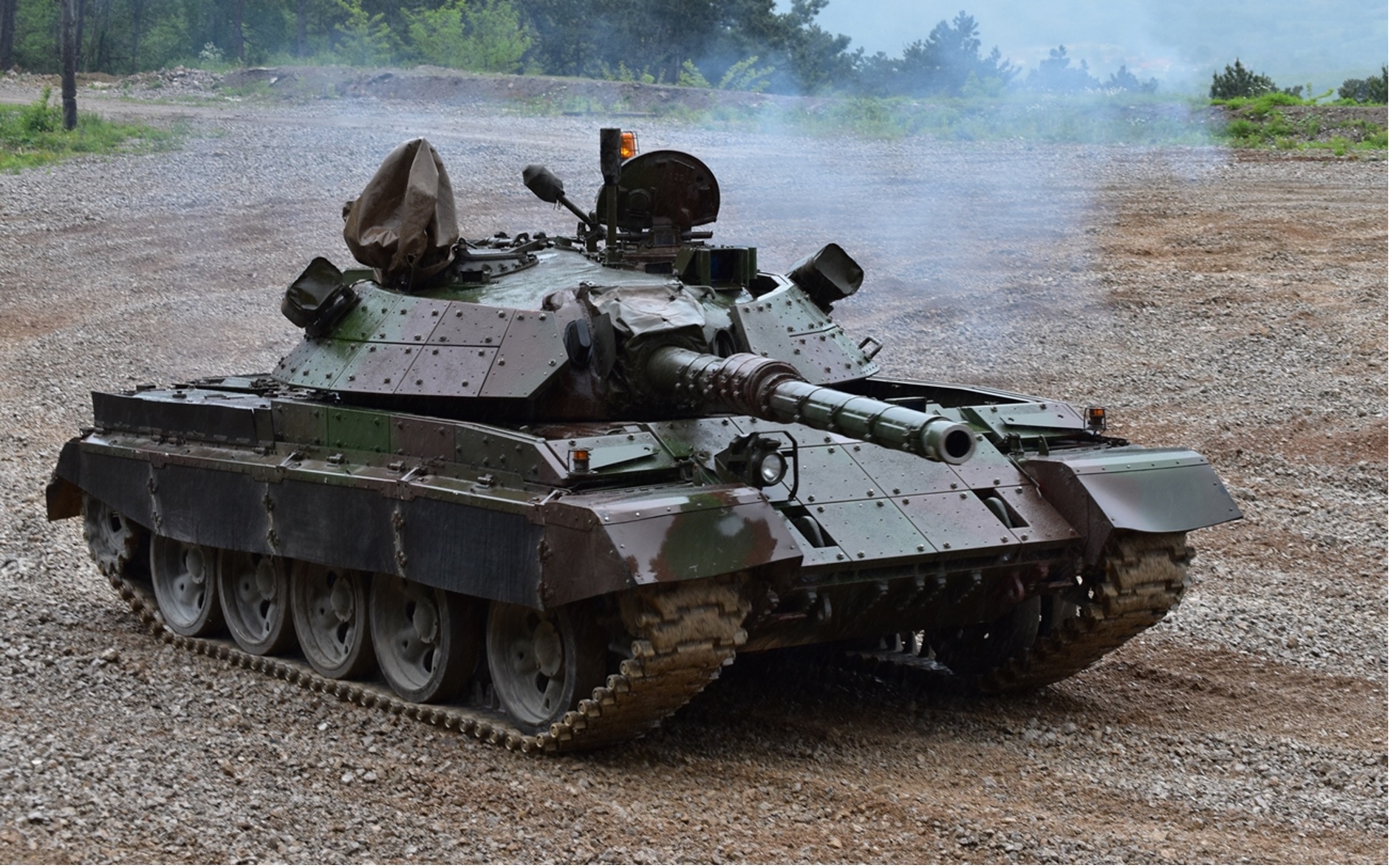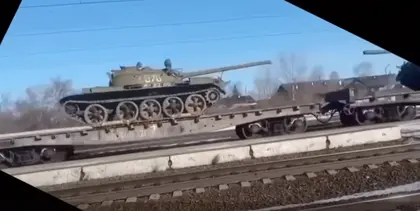Commercial satellite imagery, produced by Maxar Technologies, from as early as the summer of 2022 continuing into the autumn, showed the movement of old T-62 tanks from storage at Russia’s 1295th Central Tank Reserve and Storage Base in, Prymorskyi Krai region. These tanks which, unlike those deployed at the start of the full-scale invasion showed little sign of having been upgraded or modified, began to appear on the front line in Ukraine.
Then, in March 2023, footage began to appear on social media of the even older T-54 and T-55 tanks being transported by rail from the Arsenyev base, which raised widespread speculation that these armored vehicles, which were built in the 1960s, were also being deployed to the Ukrainian front.
Experts initially presumed that these tanks would then be modernized and upgraded before being sent to the frontlines. There was an attraction in using the T-54/55 due to its simplicity which would be reflected in a relatively short time to train crews, particularly conscripts, as well as low, by 21st century standards, operational, logistic and maintenance costs.
Russia had much experience in upgrading its T54/T55 tanks, primarily for export, which have seen action in most of the conflicts in the Middle East, Africa and Caucuses of the 1980s, 90s and as recently seen in Yemen and Sudan.
However, the T-54/55s seen in Ukraine appear to have received no enhancements and have been deployed in the same condition as when they were placed in storage. They appear to lack any of the protective features seen on some of the enhanced variants of the 1990s, or even the 1980s.

EXPLAINED: What We Know About Russia’s Oreshnik Missile Fired on Ukraine
The 205 mm front turret and 120 mm hull front armor, offers limited protection from modern anti-tank weapons and their rudimentary fire control and gun stabilization systems make them unsuitable for use in their original primary role as part of a mechanized assault group. The 100 mm rifled gun, carried by these older versions of the tank, would be ineffective against virtually all of Ukraine’s armor. Upgraded T55s, used by the Iraqi Republican Guard in Kuwait during the First Gulf War, were simply outgunned by US M1 Abrams and British Challenger tanks and destroyed at ranges that exceeded their own maximum limit.
As John Delaney, a senior curator at the UK’s Imperial War Museum (IWM) said: “Versus a Leopard 1 or Challenger in a one-on-one tank matchup [the T54/T55] will lose every time.” So far in the war in Ukraine there have actually been very few tank on tank engagements, with most of the estimated 1,900 tanks Russia has lost having been destroyed by anti-tank guided weapons, indirect fire (conventional artillery and rockets), drones or just being abandoned.
Some estimates say that there may have been several hundred of these old tanks in storage but the odd sightings behind the Russian lines does not indicate that they have arrived in Ukraine at anything like those numbers. Unless Russia is hiding them away and intends to launch them in the sort of ‘meat grinder’ tactics of its recent infantry battles, they must find some other use for them.
As Russia increasingly goes on the defensive, building extensive trenches and defensive positions, particularly in the south of Ukraine the T54/T55s may prove more useful as static gun emplacements. The tank could be dug in so that only its turret can be seen above ground to defend a front line against counterattacks. As Delaney went on to say: “If you’ve been the aggressor in a war and you’re suddenly about to be on the defensive, this would be effective for static defensive positions.”

(Destroyed) T55 dug in, Kuwait 1991
Photo: Open source
Another use could be as an additional artillery system, to provide indirect fire support to mobile Russian forces, operating from one ‘tactical bound’ behind advancing troops. It is also likely that, as they run low on conventional artillery ammunition, Russian forces may have stocks of the 100mm ammunition used by the tank which includes high explosive-fragmentation, as well as anti-tank rounds.
As the saying goes “beggars can’t be choosers”, Robert Lee, a senior fellow at the US Foreign Policy Research Institute comments: “In general, Russia has lost a lot of equipment, and it’s hard to build new equipment. They are producing new tanks – they are still producing the T-90 – but they need more equipment than they can produce, so they are relying on old tanks to make up for the shortages.”
It should also be noted that Ukraine also has fielded some, albeit highly enhanced versions, of the T55. At the end of 2022 Slovenia transferred 28 of its M-55S tanks from storage. Derived from former Soviet T-54/T55s, the M-55S variant once formed the backbone of Slovenian armored units benefitting from a stabilized NATO standard 105mm main gun, superior reactive armor protection, new fire-control system and an improved powerplant. The British gun is compatible with a wide range of modern ammunition, including armor-piercing sabot rounds that can penetrate the armor of a modern T-72.

Slovenia M55S tank
Photo: Open Source
You can also highlight the text and press Ctrl + Enter






